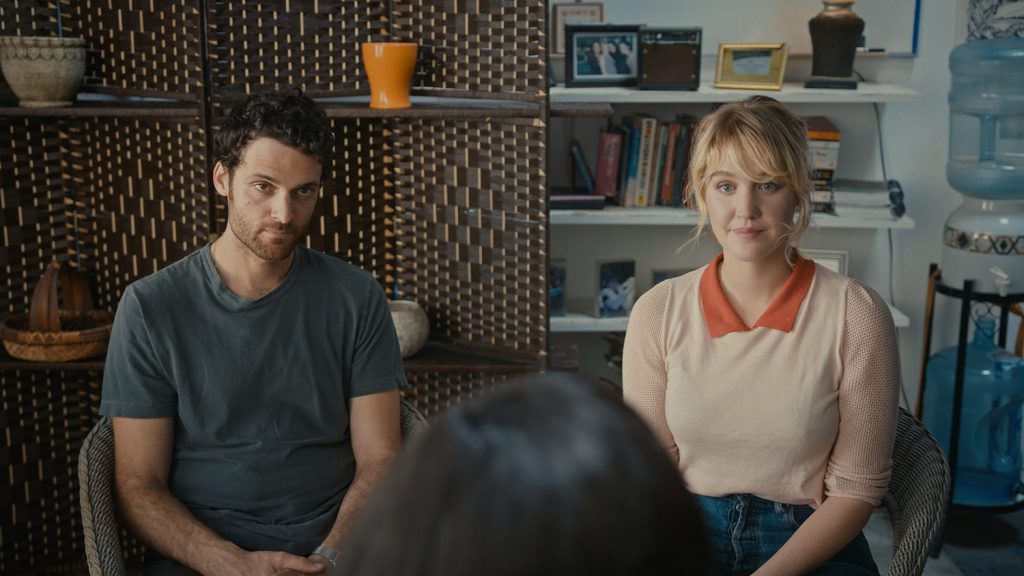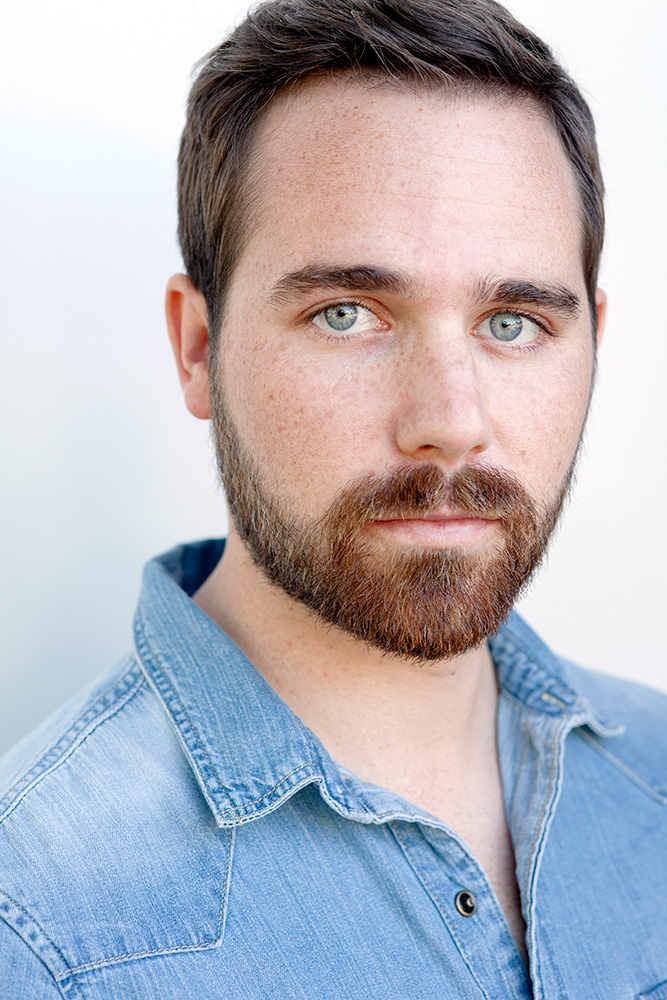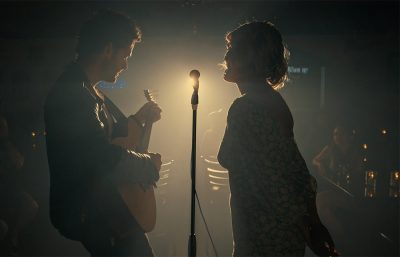Now Available Digitally on All Major Streaming Platforms
PURE O is a semi-auto, biographical memoir about the time Director-Writer-Editor Dillon Tucker was diagnosed with OCD. He was experiencing the early phases of what was to be the darkest, bleakest, most hellish period of his life. While also working on a promising film career and other creative pursuits, he was working as a counselor at a drug and alcohol rehab helping people when he discovered he needed more help than he could have ever anticipated.
Tucker said in his Director’s Statement that he made PURE O to raise awareness about the agonizing mental and behavioral health consequences resulting from OCD, which affects more than an estimated 3 million adults in the United States. Legions who have it are yet to be diagnosed, are yet to learn of the scourge plaguing their lives.
The National Survey of American Life (NSAL) found that Black Americans experience OCD at rates equivalent to the general population, however, very few receive treatment, indicating a substantial health disparity. In some studies, African American and Asian American experience more related OCD symptoms than European Americans. Asian Americans also reported elevated levels of obsessive beliefs. OCD affects all races and ethnicities, but it can look different in various populations. Hispanic and Latinx Americans are two of the fastest-growing racial/ethnic groups in the United States where about 50.5 million people (16 percent of the U.S. population) are of Hispanic or Latinx origin. Since there are different types of Hispanic/Latinx communities and identities, not all of this information applies to every individual.
OCD is grossly misrepresented in film and television, Director Tucker writes. “Hopefully, un-diagnosed sufferers will see this film, gain insight into their own experience and find the help they need. And people who have no idea about OCD will walk away with a better understanding,” he is quoted as saying in his Director’s Statement. “PURE O is about mental health and, yet, so much more. It tackles a litany of universal issues we all face: Grief, coming-of-age, loss, addiction, intrapersonal growth, redemption and the power of social connection.
“I hope audiences walk away feeling closer to others and also themselves. OCD thoughts are just normal thoughts that get misinterpreted. There is an opportunity with this film to show the world what OCD really looks like. To show those who suffer that receiving an OCD diagnosis doesn’t mean your life is over. And to show everyone else that we all need the help of other people.”
Primarily obsessional OCD has been called “one of the most distressing and challenging forms of OCD, Obsessive-compulsory disorder. People with this form of OCD can have vivid, harrowing unwanted thoughts frequently flooding heir minds, typically centering on a fear that they may do something totally uncharacteristic of them, even horrific, like the following excerpt from a scene of PURE O which was nominated for a Grand Jury Prize at the 2023 SXSW: “My constant fear and worry,” says lead character Cooper, played by Daniel Dorr, eventually drives me to complete insanity. I lose control of my mind and decide to murder Emily. When I get home, she’s asleep in bed. I grab a butcher knife and hack her to pieces. Right after I kill her, I come back to my senses. I see that I’ve murdered the person I love most. Unable to live with myself, I decide to commit suicide.”

A sober therapy session: Cooper, played by Daniel Dorr, sitting next to the love of his life, Emily, played by Hope Lauren. They are eyeball to eyeball with Cooler’s therapist, Penelope, played by Theresa Hayes.
There But for the Grace of God
A Caveat for the WORD audience: The following excerpt from Tucker’s Director’s Statement put me in the right frame of mind, allowing me to watch a movie that at any moment in its 120 minutes running times could have had me gasping and squirming in my seat because of what I consider the cinematic, kinetic energy throughout the film. Instead, I experienced an almost cosmic catharsis that swept through my mind, body and soul as I watched PURE O, a movie with a celestial mission: To anyone who has ever suffered in silence with mental health issues, and to anyone who has ever had a loved one with anxiety or depression – this film is for you.
The Making of a Sublime Film
“I Wanted the Audience to Not Have a Sense of Where Real Life Stopped And the Acting Began”
From start to finish, PURE O is a 118-minute emotional roller coaster with deep swells and rip roaring twists and swerves. There came a time when this reviewer felt as if he was witnessing a filmmaking team under a collective spell by a muse running at full throttle.
“I come from an acting background, having been an actor in LA for almost 20 Years,” Tucker writes in his director’s testimonial. “So when it came time to cast the film, I took that on myself.” He writes that he knows “many incredibly talented actors,” believing he would find the cast that he wanted. An anecdote: “I heard John Cassavetes once say that when he started making films he was looking for people like himself – people who were now in their 30s who had a chip on their shoulder,” that they felt like Hollywood failed to help them showcase their abilities. “I cast the film keeping that in mind.”
He also wrote, “I also intentionally mixed in non-actors and cast real life couples – one of which played the leads. The goal was hyperrealism. I wanted the audience to not have a sense of where real life stopped and the acting began.”
“Having non-actors in the film who are real life OCD sufferers and drug rehabilitation counselors not only enhanced the world that I was trying to build, but they also became an integral resource for all of the actors on the film. Talking on-set about all of their experiences and answering all of the questions other cast members had was invaluable to everyone’s performances in the film.”
Sentimental? Nay, Naturalism Rules!
“This was a film that I wanted to be totally grounded in naturalism. I wanted all of the actors to be suspicious of “acting” – avoid knowing what they were doing, avoid delivering a message. And I in turn tried to create as much of a responsive world as possible for them to play in.”
“I really wanted them to play their characters as close to themselves as possible – drawing from their own personal experience and merely lending the names of the characters to themselves for a while. I purposely wanted a mixture of actors and non-actors for the film. Having non-actors in the film who are real life OCD sufferers and drug rehabilitation counselors not only enhanced the world that I was trying to build, but they also became an integral resource for all of the actors on the film. Talking on-set about all of their experiences and answering all of the questions other cast members had was invaluable to everyone’s performances in the film.”
A Singer-Songwriter Performing Music Since He Was a Teenager
“I really just wanted to mine my own experiences and try to capture something as truthful as possible à la filmmakers like Mike Mills, Destin Daniel Cretton, Noah Baumbach & Derek Cianfrance.” While writing and during production, he listened to Bob Dylan, Bill Evans, The National, Leonard Cohen & Tom Waits. “I was also reading a bunch of Bukowski’s poetry.”

Dillon Tucker
Music was a godsend when he was undergoing treatment. His mother was a painter and an art therapist, “so I was raised in a household where I saw and experienced the power of art therapy firsthand.” The soundtrack for PURE O consists of his songs and performances from hat period of his life when he was under emotional siege.

Another reason for him to make this film was to show other people who suffer from mental health issues that they can get better and succeed, that their “disease’ does not define them. “I believe in the therapeutic nature of music and I wanted PURE O to be a platform for that.”
“I also feel that being a musician really helped me when it came to editing. The feel for rhythm, pacing, dynamism. It all felt very similar to making music. Between that and having been a writer for so long, it was a pretty effortless transition into the editing room. Editing feels like writing, just with a finite number of choices versus infinite possibilities.”
When the time came for him to develop a cast, Daniel Dorr was at the top of his list for lead actor. He and Dorr, who plays the lead role, Copper, both attended The American Academy of Dramatic Arts. “I needed someone who was able to portray a true duality. On one hand, Cooper is broken and flawed, but he is also charismatic and self-confident. I really needed an actor who could pull off doing all of those things well.”
“I knew that he could deliver on the charisma and that he was willing to be all-in and dig deep for all of the emotionally vulnerability that Cooper required. I’m happy that I chose him and grateful that he took the journey with me because he delivered in spades and brought such an authentic depth and humanity to his performance.”
His main creative collaborator, Ricky Fosheim, who produced and shot the film: They’ve been friends since they were 12 years old and have been creative collaborators for 20 years.
“We wanted to find the least we can do to light a scene and let the characters exist within the room –light the room not the actors. Let them move where they move. Don’t clean them up. Light the space and let them fill it. We also wanted to use mixed light as much as possible. Mixing natural light and practicals in our daytime interiors. We utilized a “frame within the frame approach” on Cooper as much as possible – to enhance the sense that he is isolated and separated from the world around him.”
Click here for Part 2

Editor, Publisher Gregg W. Morris @ gregghc@comcast.net, profgreggwmorris@gmail.com